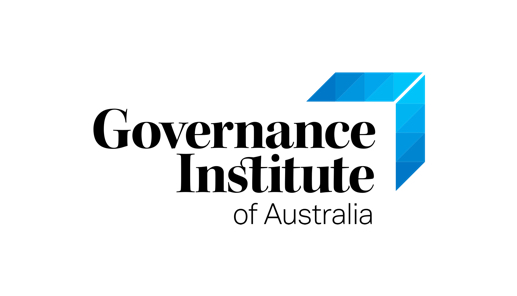Whilst the lyrics of this 1980’s REO Speedwagon song describes an unwavering commitment since receiving clarity and direction, in an emotional setting, it is not unlike the emotional connection that every leader seeks when building a culture inside an organisation.
Almost everything we think and do, starts and stops with people.
There was a traditional, and (hopefully) now delusional, mindset that ‘process’ is an organisations ultimate lever.
From a business perspective everything that we engage in – the strategy sensing, the risk mitigation, the operational intervention, the stakeholder management, the reporting and governance – whatever it is, is all about people creating this success (or not) within a culture or environment that enables it (or not).
Great people are developed by good leaders. It doesn’t ‘just’ happen.
The intentional distinction between good and great is the obligation on today’s Leaders regardless of business size or their management reach, to not only develop the next level of succession but to enhance it. Quite simply, make it better.
Whilst process is a critical success factor in enhancing business performance, optimum output is created by people in a culture that prioritises these people.
The environment within which this is enabled is the culture, deriving from the Latin colere which means to tend to the earth and grow, or cultivate and nurture. There are many definitions and interpretations however for me it is simply, how a team behaves when no-one is looking.
If culture is the how, your organisational backstory – that specific internal narrative around your reason for ‘business being’ – becomes your why. This connection is culture’s reinforcing loop, providing 24-7 feedback.
Whilst culture is unique in every organisation, it is the extent to which employees are empowered to be engaged, feel valued, and be heard that enables a culture to thrive, or not. This is the responsibility of leadership – whatever and wherever you decide that sits in your organisation – in ensuring that there is an alignment between the organisations bigger picture, its reason for being and the values and behaviours that its people desire to live and work by.
As culture is or should be a top-down influence it is leadership behaviour that determines not only team dynamics but also the recognition of people importance, based on displaying respect, encouraging learning, providing development, permitting empowerment, providing clarity, sharing values and promoting trust.
This equilibrium whilst hard work, is absolutely do-able, however it is very tough to maintain this balance through crisis management because through this period of turmoil is when real culture is put to the test. When business fundamental decisions are being made and personal livelihood is at stake this is when you will really know how good, or not, your culture is and what your likelihood of success might be.
People are the central element of organisational change, so strategies that focus on systems and structures alone will fail.
I saw a post last week in which someone declared in the midst of this coronavirus pandemic and various stages of isolation or lockdown…that crisis defines culture. I disagree. Crisis reveals culture. It is this constant feedback loop that we refer to.
Ultimately, we are talking about employee engagement (or disengagement) and the connection that joins people and culture brings us back full circle to whether or not your people know what’s in it for them.
The connector in this exchange is leadership and their ability to maintain organisational and individual health when trying to ‘stop the bleeding’ to use crisis as an example – to advocate a feeling of control that identifies stress as just a part of life whilst an unwavering commitment to the end game. Easier said than done!
This Organisational F.E.E.L.I.N.G according to, and for the benefit of your people, should include as many as possible, of the following 7 Top-Down Mind Shifts to building a Modern Culture:
- Feedback opens the door for growth and learning and is necessary to optimise individual and organisational performance. Setting reasonable goals and standards for achievement will help keep everyone appropriately challenged and focused only if the Leaders are also open to feedback and change as a result. This is a real walk the talk scenario – you need to meaningfully lead this open two-way dialogue on a fairly regular basis.
- Empowerment in relation to culture is both sides of trust, that which is both given and received. Trust is a high value form of organisational capital, the environment whereby your people can fully realize their own capacity and power as given by you, and their commitment and capability as received by you in return. This win-win partnership model is what will underpin discretionary effort.
- Experimentation is not about a lack of discipline or ‘loosely’ adding layers of risk to your current situation. It is about giving permission to ask what if rather than what is? In an organisation where your backs are already to the wall, encouraging thinking outside of the safe ‘this is how we always do it’ square to ‘we are where we are because we always do it this way let’s do it differently’ circle, is not usually obstructed by tools and technology but more so traditional behaviours, beliefs and values.
- Learning is about redefining failures, and removing the anxiety created by surprises. It is about allowing a collaborative what next rather than what the …? Often, crisis will unravel at speed and your ability to predict when and how often risk will occur is difficult at best. A culture of throwing the baby out with the bath water, of anger and detachment when something comes out of leftfield will not allow anyone to learn from it. Consider FAIL as your First Attempt In Learning.
- Information or a data-driven mindset is one that enables fact-based decision-making justifying our risk management objectives and actions. The challenge however is promoting data as a path to performance management without your people feeling that big brother is watching them. Celebrating quick wins, showcasing that was then this is now and using the data to build a picture of what success looks like will create a proactive and engaged workforce that has a greater understanding of how they are performing and insight into where improvements can be made.
- Nurturing your people to maximise their potential is the quickest road to your success as a Leader, and in maximising output as an organisation. Talent, hard work, and luck are important in helping people reach their peak but are insufficient in enabling them to continue to perform on a consistent basis without professional and personal development. It is the balance of nature and nurture.
- Gratitude is appreciation for effort. When people feel grateful, they’re willing to commit more effort to the cause, to their colleagues, to finding solutions, to be loyal sometimes even at a cost to themselves. This generous respect will assist build a path to perseverance, to motivate your people to see it through deep in the trenches alongside you.
Choosing my words carefully I don’t recommend that we leave behind the traditional culture of honesty, integrity and encouragement for example. I do suggest however that once we have pre-constructed this foundation of trust, let’s take it to the next level and accelerate a more self-sufficient culture of creativity, experimentation and empowerment to name a few.
Or let me ask you this.
How will you keep up with the pace of technology and disruption, the demands of an agile business model, and the ever more societal values of a millennial workforce that desire to leave a positive impact on the world?








